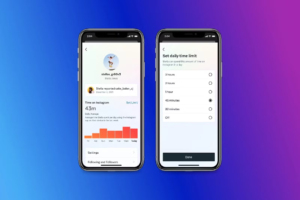
Demand forecasting is an essential practice that every retailer should indulge in as it can help them in several ways. Businesses can meet consumer demand effectively and avoid losses due to out-of-stock products. Further, the additional expense of stocking different products can also be avoided.
What is Demand Forecasting?
Demand forecasting is the method of predicting future demand. Demand forecasting analyzes several internal and external factors that may influence demand, such as seasonality, historical demand patterns, inventory levels, and market trends for increasing forecast accuracy. Retailers can make well-informed decisions with proper planning, and it also yields better results in capacity planning and resource planning and effectively replenishes the store and distribution center.
The Necessity of Granular Level Forecasting
Forecasting demand is essential for retail as supply chains are complex with multiple channels, consumers are demanding, and the competition is high. For making well-informed decisions regarding purchasing and boosting production, replenishment, and allocation, demand forecasting at the granular level is necessary for estimating demand for different time frames. Demand forecasting can be done monthly, daily, weekly or hourly, depending on the business needs, but highly granular forecasts add more value.
Benefits of Accurate Demand Forecasting
Accurate demand forecasting is crucial for retail operations as they minimize uncertainty. However, we know that 100% accurate demand forecasts are not possible in spite of the availability of data. However, demand forecasting should be as accurate as possible as the success of inventory depends on it.
Utilizing machine learning algorithms and a powerful demand planning software that supervises the shift in demand-side and matches the supply side to make up for inaccurate forecasts and demand fluctuations. Retailers can draw various benefits from demand forecasting:
- Being able to place the right amount of inventory at the right location to meet the demand of each supply chain.
- Maximize sales and profit.
- Optimize inventory and pricing decisions.
- Wastage can be reduced, and fresh products can be provided to customers through effective stock allocation.
- Improving inventory management
- Enhancing productivity by planning ahead
- Better capacity utilization and more credible fulfillment due to improved visibility into stock requirements.
- Minimized personnel expenses because of forecast-based shift optimization in distribution centers and stores.
With a correct prediction of the number of items sold over a particular period, businesses can replenish and maintain stock accordingly.
How to Forecast Demand Better?
Some retailers still use manual calculations and spreadsheets to estimate demand but modern demand forecasting involves using sophisticated statistical analytics while considering the factors that influence demand for estimating demand. This is done through demand planning software that can process massive datasets and analyze them to generate predictions. Demand forecasting software automates challenging and time-taking decisions and uses AI and Machine Learning to generate predictions.
Why is Demand Forecasting Important for Retailers?
Retailers are often confused about whether they are understocking or overstocking. Holding too much inventory can lead to additional expenses as the stocks might be cleared through clearance sales by incurring a loss. Whereas understocking results in loss of sales and unfulfilled demand, and lost sales that leave customers unsatisfied. Not establishing the proper balance can have a negative impact on inventory holding cost, supply chain planning, and profitability.
Demand Forecasting Methods
Initially, retailers used to calculate demand manually by considering historical data, but machine learning is utilized to understand demand in contemporary times.
Machine Learning Enhances Demand Forecasting Precision
Machine learning automates a large portion of work and can analyze massive datasets and generate accurate forecasts. Deploying retail AI can give you control over your own data and will generate insights that enhance profits and revenue. With developments in large-scale data processing, it is possible to consider several variables that impact demand and calculate demand in minutes. Historical data can be evaluated conveniently with AI and machine learning, and understanding past data can help to realize where retailers lost sales. Demand planning software can automatically adjust forecasts and enhance accuracy for individual SKU units.
Three broad aspects that affect demand are:
-
Fluctuations in baseline demand –
New product launches and sales cannibalization may result in variations in baseline demand. Introducing a new product may lead to demand fluctuations for the already existing products. Similarly, reducing the price of a product to increase demand may decrease the demand for a similar category of products.
-
Internal business decisions –
Machine learning can incorporate all of the data related to your internal business decisions such as marketing activities, new product introductions, promotion type, price elasticity, in-store display, and effect of price change on other products of similar category and generate a baseline demand forecast.
-
External factors such as Local Events and Weather –
External factors that are not under your control may include local events, weather forecasts, and your competitor’s business decisions. These can influence your demand, and machine learning can automate this work and incorporate external factors into the forecast.
Demand Forecasting in Omnichannel Retail
Retailers having an omnichannel presence must deliver a satisfactory customer experience in every channel, whether online or in physical stores. Customer experience depends on a retailer’s supply chain visibility and efficiency. For forecasting demand across various channels, retailers should connect the online sales to the proper fulfillment channel. Online orders have a different sales pattern than physical stores, and the pattern may change as customers want quicker online fulfillment even in times of rush. Demand trends vary across channels, and demand planning software should separately forecast demand for online and in-store channels, allowing more precision. Omnichannel retailers should be able to predict demand by fulfillment channel, sales channel, and store locations to ensure that the suitable amount of stock is present in the right places and satisfy consumers across all channels.
Wrapping Up
Demand cannot be predicted with 100% accuracy, and thus retailers should always leave scope for uncertainty. But for accurate demand forecasting, demand should be predicted on various levels, and forecast accuracy should be checked for different periods. Demand planning software can consider all these factors and generate near to accurate predictions, which can help retailers to restock inventory optimally and meet consumer demand effectively, thereby boosting sales and revenue.






